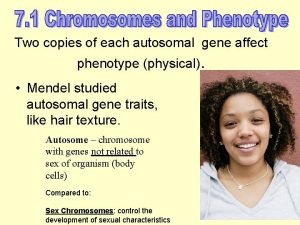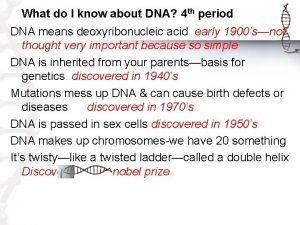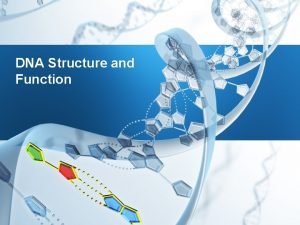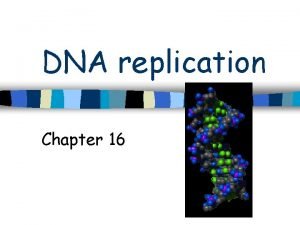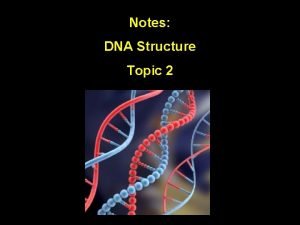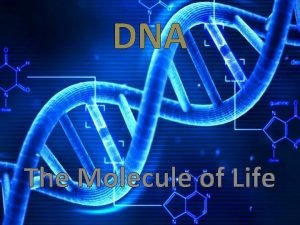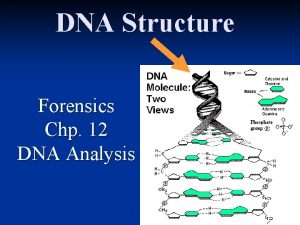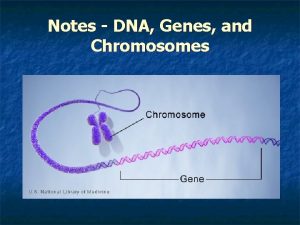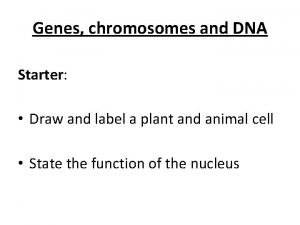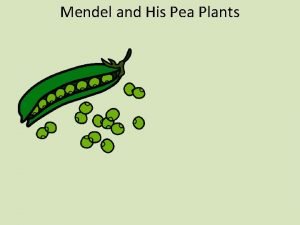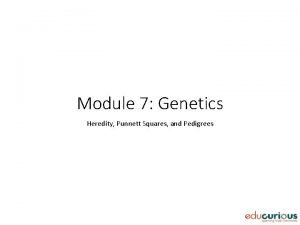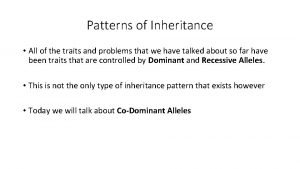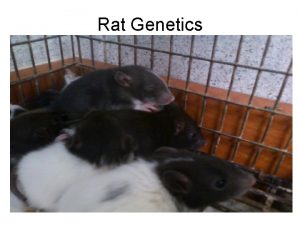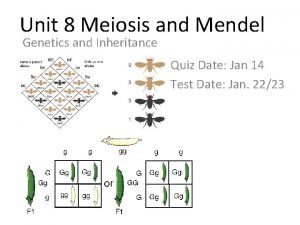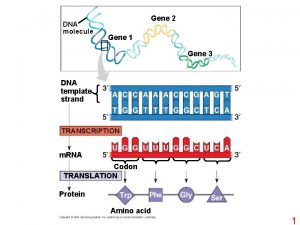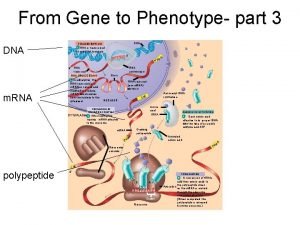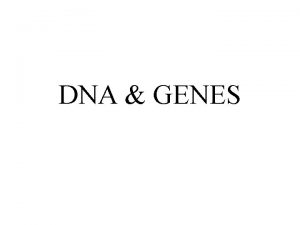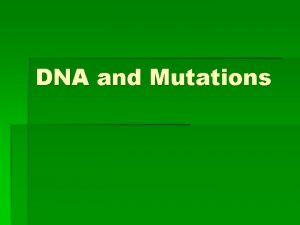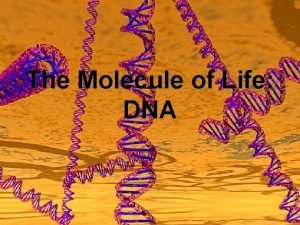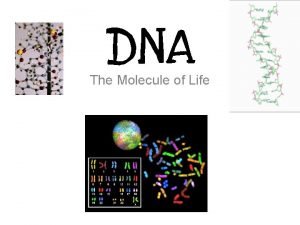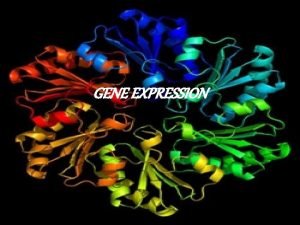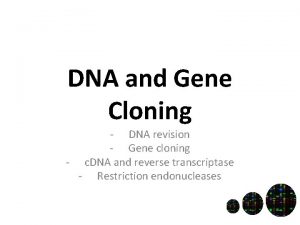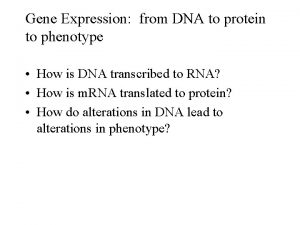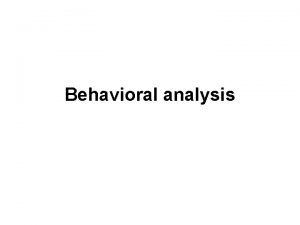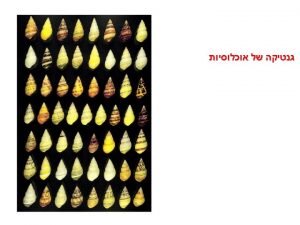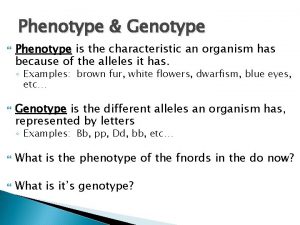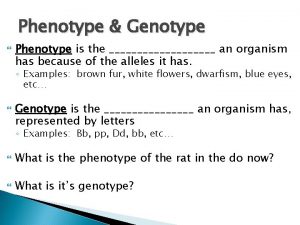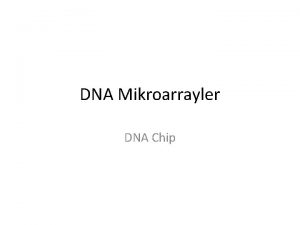From Gene to Phenotype part 2 DNA molecule
























- Slides: 24

From Gene to Phenotype- part 2 DNA molecule Gene 2 Gene 1 Gene 3 DNA strand (template) 3 A 5 C C A A A C C G A G T U G G U U U G G C U C A TRANSCRIPTION m. RNA 5 Codon TRANSLATION Protein Trp Amino acid Phe Gly Ser 3

Lecture Outline 11/7/05 • The central dogma: – DNA->RNA->protein • Various types of RNA • The genetic code • Mechanisms of translation – Initiation, Elongation, Termination Exam 3 is next Monday. It will cover mitosis and meiosis, DNA synthesis, transcription, translation, genetics of viruses. (chapters 12, 13, 16, 17, part of 18)

Four types of RNA • m. RNA – Messenger RNA, encodes the amino acid sequence of a polypeptide • r. RNA – Ribosomal RNA, forms complexes with protein called ribosomes, which translate m. RNA to protein • t. RNA – Transfer RNA, transports amino acids to ribosomes during protein synthesis • sn. RNA – Small nuclear RNA, forms complexes with proteins used in eukaryotic RNA processing

RNA will fold to specific shapes 3 A C C A 5 C G G C C G U A A U UC * AG * C AG UA U C C * G * U GU G G * C CGAG * * AGG UC * * GAG C Hydrogen U A bonds * G A * A C * U A G A • Because RNA is single-stranded, parts of the molecule can base pair with other parts of the same molecule, causing it to fold into defined shapes. • Some RNA molecules can even act as enzymes (ribozymes) Anticodon

Correspondence between exons and protein domains Gene DNA Exon 1 Intron Exon 2 Intron Exon 3 Transcription RNA processing Translation Domain 3 Domain 2 Domain 1 Polypeptide

The genetic code Second m. RNA base UUU UUC U UUA First m. RNA base (5 end) A Phe A UCU UAU UCC UCA UAC Ser Tyr UGU UGC Cys U C UCG CUU CCU CAU CUC CCC CAC Leu Pro CUA Leu CCA CAA CUG CCG CAG AUU ACU AAU ACC AAC AUC lle AUA ACA Thr AAA AUGMet or ACG AAG GUU GCU GAU GUC GCC GAC start G G UAA Stop UGA Stop A UAG Stop UGG Trp G UUG C C GUA GUG Val GCA GCG Ala His Gln Asn Lys Asp U CGC CGA Arg C A CGG G AGU U AGC Ser C AGA A AGG Arg G U GGC GAA Glu GGA GAG GGG Gly C A G Third m. RNA base (3 end) U

The code is a triplet code – the new boy saw the big cat eat the hot dog • The first evidence for triplet code came from deletion experiments – the new boy saw the big cat eat the hot dog – the neb oys awt heb igc ate att heh otd og • Function could be restored by an insertion nearby – the new boy saw the big cat eat the hot dog – the neb oys aaw the big cat eat the hot dog

The code is a triplet code • . . . or by two more deletions to get it back into the correct “reading frame” – the new boy saw the big cat eat the hot dog – the neb oys awt heb igc ate att heh otd og – the neb osa wte big cat eat the hot dog

Deciphering the Code • Your book tells how people used synthetic m. RNAs and in vitro translation to determine decipher the codons. • E. g. UUUU -> phenylalanine only – UCUCUCU -> mix of leucine and serine • Why is it a mixture?

The code is redundant CUU CUC C CUA CUG A lle ACU AAU ACC AAC AUA ACA AUGMet or ACG start GUU GUC G GUA GUG UGU Cys U UGC C UGA Stop A UGG Trp G CCU U CAU CGU His CCC CAC CGC C Arg Leu CCA Pro CAA CGA A Gln CCG CAG CGG G AUU AUC G Thr GCU GCC Val Ala GCA GCG AAA AAG Asn Lys AGU AGC AGA U Ser C A AGG Arg G U GAU GGU Asp C GAC GGC Gly GAA GGA A GAG GGG G Third m. RNA base (3 end) First m. RNA base (5 end) • Several different codons encode the same amino acid Second m. RNA base U C A UAU UUU UCU Tyr Phe UAC UUC UCC U UCA Ser UAA Stop UUA Leu UAG Stop UCG UUG

The code is comma free • No punctuation between words. – Therefore deletions cause frameshifts • It does have start and stop signals, however. – Start: AUG – Stop: UAG, UAA, UGA

Translation: the basic concept TRANSCRIPTION DNA m. RNA Ribosome TRANSLATION Polypeptide Amino acids Polypeptide Trp Ribosome Phe t. RNA with amino acid attached Gly t. RNA C A G C C A A A U G G U U U G G C Codons 5 m. RNA G Anticodon 3

The structure of transfer RNA (t. RNA) Amino acid attachment site 3 A C C A 5 C G G C C G U A A U U C * AG * C A G UA U C C * G * U G G * C CGAG C * * AGG U * * GA G C Hydrogen G C U A bonds * G * A A C * U A A G Anticodon

t. RNA 5 3 Amino acid attachment site Hydrogen bonds A 3 Anticodon (b) Three-dimensional structure A G Anticodon 5 (c) Symbol used in this book

Ribosomes TRANSCRIPTION DNA m. RNA Ribosome Growing polypeptide TRANSLATION Polypeptide t. RNA molecules E Large subunit P A Small subunit RNA + protein. We now think that RNA catalyzes the reactions. 5 m. RNA 3

EPA model of a ribosome P site (Peptide site) A site (Acceptor site) E site (Exit site) Large subunit E m. RNA binding site P A Small subunit

New amino acids are added to the carboxyl end of the polypeptide Amino end Growing polypeptide Next amino acid to be added to polypeptide chain t. RNA 3 m. RNA 5 Codons

The initiation of translation t Me P site 3 U A C 5 t Me 5 A U G 3 Initiator t. RNA GTP GDP E m. RNA 5 Start codon m. RNA binding site 1 5 3 Small ribosomal subunit Small subunit binds just upstream of start Large ribosomal subunit A 3 Translation initiation complex 2 Special initiator methionine binds to the start codon (AUG) The large subunit can now bind to make the active ribosome

Elongation TRANSCRIPTION Amino end of polypeptide DNA m. RNA Ribosome t. RNA with appropriate anticodon binds at A site 1 TRANSLATION Polypeptide m. RNA Ribosome ready for next aminoacyl t. RNA 5 E 3 P A site 2 GTP 2 GDP E E P P A 2 GDP 3 GTP Translocaton. Everything moves left one notch. Polypeptide is now at P. Empty t. RNA leaves the E site. A E P A Peptide bond formed. Growing chain is now at A

Termination Release factor Free polypeptide 5 3 3 3 5 5 Stop codon (UAG, UAA, or UGA) 1 Stop codon has no matching t. RNA 2 Release factor binds and separates the polypeptide from the t. RNA 3 The ribosome separates from m. RNA

An aminoacyl-t. RNA synthetase joins a specific amino acid to a t. RNA Amino acid Aminoacyl-t. RNA synthetase (enzyme) ATP Pyrophosphate Pi 3 Appropriate t. RNA bonds to amino Acid, displacing AMP. 4 1 Active site binds the amino acid and ATP. P P P Adenosine P Pi Pi t. RNA P Adenosine Activated amino acid is released by the enzyme. AMP

See the Animation • www. dnai. org

Inhibition of protein synthesis NOTE: Prokaryotes (this generally includes protein synthesis in mitochondria and chloroplasts)

Summary of transcription and translation in a eukaryotic cell DNA TRANSCRIPTION 1 RNA is transcribed from a DNA template. 3 5 RNA transcript -A ly Po RNA polymerase RNA PROCESSING Exon 2 In eukaryotes, the RNA transcript (prem. RNA) is spliced and modified to produce m. RNA, which moves from the nucleus to the cytoplasm. RNA transcript (pre-m. RNA) Intron Aminoacyl-t. RNA synthetase p Ca NUCLEUS Amino acid t. RNA FORMATION OF INITIATION COMPLEX CYTOPLASM 3 After leaving the nucleus, m. RNA attaches to the ribosome. 4 Each amino acid attaches to its proper t. RNA with the help of a specific enzyme and ATP. Growing polypeptide m. RNA A Activated amino acid ly- Po AMINO ACID ACTIVATION p Ca 5 TRANSLATION C AC U A AC E AAA UG G U U U A U G Codon Ribosome A succession of t. RNAs add their amino acids to the polypeptide chain Anticodon as the m. RNA is moved through the ribosome one codon at a time. (When completed, the polypeptide is released from the ribosome. ) 5 A ly- Po Ribosomal subunits
 Two copies of each autosomal gene affect phenotype
Two copies of each autosomal gene affect phenotype Gene by gene test results
Gene by gene test results Chapter 17 gene expression from gene to protein
Chapter 17 gene expression from gene to protein Structure of dna
Structure of dna Dna features
Dna features Dna molecule diagram
Dna molecule diagram Phosphodiester bond in dna
Phosphodiester bond in dna Which process produces only identical offspring?
Which process produces only identical offspring? Dna structure
Dna structure Dna prokaryot
Dna prokaryot Dna the molecule of life
Dna the molecule of life Dna molecule two views
Dna molecule two views The relationship between genes dna and chromosomes
The relationship between genes dna and chromosomes Chromosome vs dna vs gene
Chromosome vs dna vs gene What are the enzymes involved in dna replication
What are the enzymes involved in dna replication Dna and genes chapter 11
Dna and genes chapter 11 Bioflix activity dna replication dna replication diagram
Bioflix activity dna replication dna replication diagram Replication fork
Replication fork Coding dna and non coding dna
Coding dna and non coding dna Pea plant phenotype
Pea plant phenotype Incomplete dominace
Incomplete dominace Phenotype example
Phenotype example There is a practical joker in the maternity ward
There is a practical joker in the maternity ward Rat with black hair
Rat with black hair Haploid karyotype
Haploid karyotype
